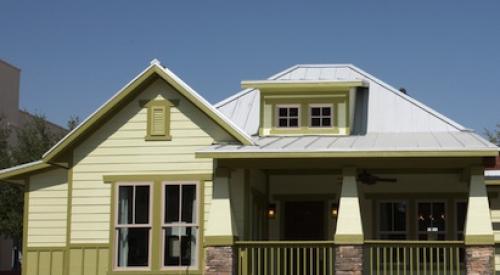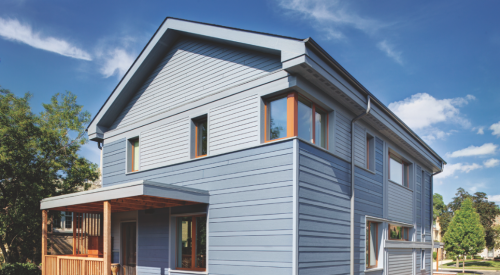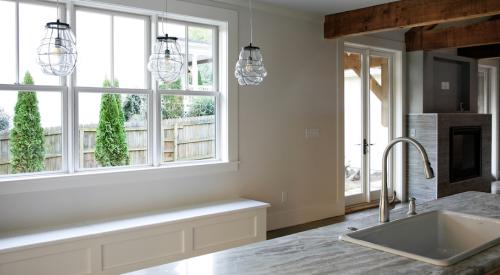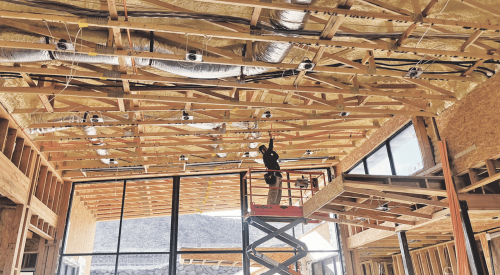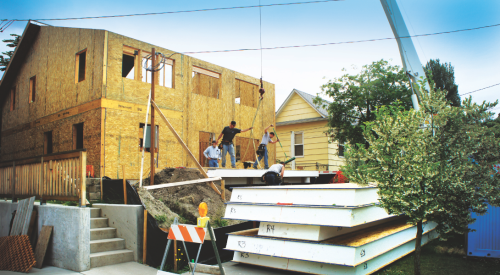Money drives nearly every decision in home construction, including location, design, labor and materials. Money is also a reason builders should consider geothermal heat pumps (GHPs).
Just ask David Ritchie, owner of Chisholm Creek Development and Builders in Enid, Okla. He used GHPs to outfox the competition and win a bid for a retirement community of 16 duplexes and 13 single-family homes.
When Ritchie won the bid, the client told him GHP wasn't going to be a major factor in choosing a builder for the rest of the project. That decision changed dramatically when the client saw the energy savings on the pilot run; the local utility conducted a load calculation and found that GHP would save homeowners as much as $100 per month per unit.
Ahead of the Curve
 |
"There's a perception in Oklahoma that natural gas or propane is the cheapest way to heat your home," says Mike Newcombe, OG&E program development coordinator.
 |
According to the EPA, GHPs can save homeowners as much as 30 to 70 percent on heating and 20 to 50 percent on cooling costs over conventional systems.
Add to that the $2,000 federal tax credit to the builder for an energy-efficient new home. More than 20 states also offer incentives to help offset the cost.
The Price of Savings
 |
The Geothermal Heat Pump Consortium reports GHPs have seen steady growth across all market sectors. In the last five years, unit sales nationally have climbed, on average, more than 22 percent per year. This increase comes despite a higher first cost. When operated year-round for both heating and cooling, the incremental payback period for geothermal heat pumps can be as short as three to five years, according to the U.S. Department of Energy's Federal Energy Management Program.
 |
The total price depends on installation, too. Horizontal ground loops are typically more economical because a driller may not be required. Horizontal installations are most common in new construction on lots one-eighth acre and greater. Vertical installations (or more compact horizontal installations) have less impact on the landscape and are more common in urban areas or tightly planned developments.
Drilling Home the SaleLori Vogel, a real-estate agent in Middletown, Conn., learned about GHPs through her local utility. She's an advocate because she says they are in the long-term interest of her clients. Vogel explains the upfront and operating costs of GHPs so her clients can make an informed decision.
Admittedly, the majority of Realtors are less informed, and in the absence of a helpful realtor, builders may need to do the educating themselves. Ritchie has taken a proactive approach to this, furnishing his homes with cost breakdowns.
"We created a whole series of factoids to stick in the houses and with cartoon characters," Ritchie says. "We stick them on the wall of show homes to demonstrate all of the different things these houses will do and how it affects the bottom line."
Regardless how you do it, let your clients know: the energy answers they are looking for may lie just below their feet.
| PATH’s Incentive Clearinghouse (tax credits, rebates and more): http://www.pathnet.org/sp.asp?id=18323
PATH Case Study: David Ritchie: Geothermal Heat Pump Consortium: |
| Author Information |
| Scott Shepherd writes about better building practices on behalf of the Partnership for Advancing Technology in Housing (PATH). PATH is administered by the U.S. Department of Housing and Urban Development. |
